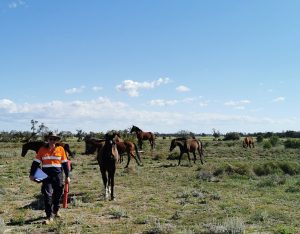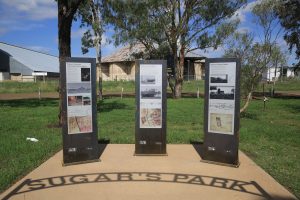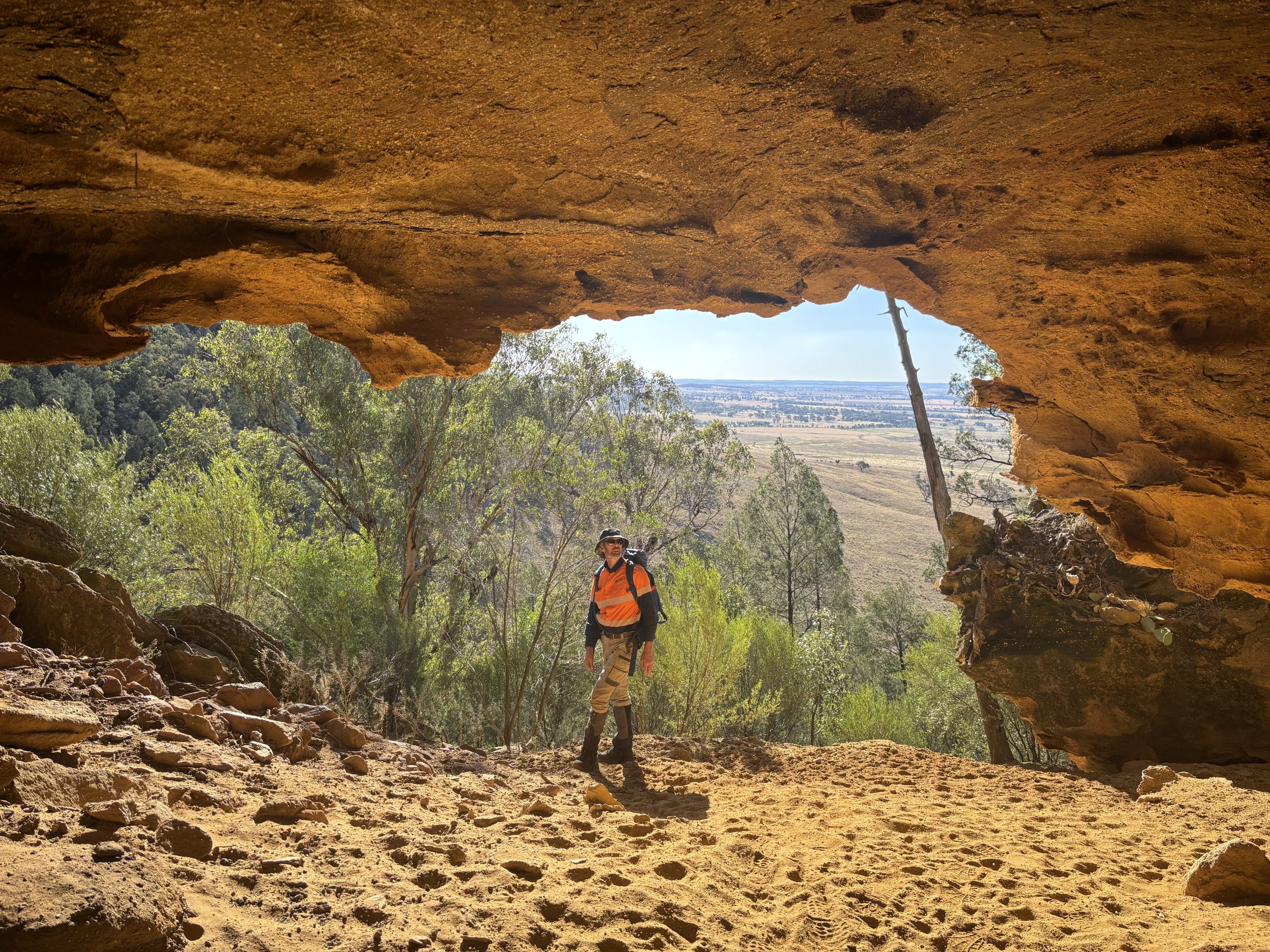Bringing history to life with heritage interpretation
Author: Samuel Ward, Heritage Consultant
June 1, 2025
News & Insights
Built environments constantly adapt to the needs of our society. Development projects frequently incorporate heritage interpretation to reflect a site’s past and preserve its stories. Heritage interpretation may be required as part of a development approval to help build and maintain community connection and add to the amenity of a project.
Heritage Consultant Samuel Ward explains how he and the Niche team bring these interpretive signage projects to life for clients.

Heritage Consultant Samuel Ward working in the field
Creating a connection to place
The simplest types of heritage interpretation are plaques or signs on a building or at a place. Interpretive elements can include images or graphics while some incorporate visual, audio or spatial elements, or form artworks or experiences that take people on a journey of discovery.
Interpretive signs may help preserve historic or vulnerable sites by allowing visitors to understand their significance.
Heritage interpretation helps employees, residents or visitors gain a deeper understanding of the place, its past and the people who shaped it. Research indicates that connecting people to the heritage of a place can enhance its liveability and increase community wellbeing.
Telling past stories and uncovering hidden histories
When we work with clients on heritage interpretation projects, our role is to research the history and help interpret it for the community. That means uncovering the stories of a place and deciding how best to communicate them.
Our research includes archival records and community consultation that offers perspectives not captured in the archival record, giving us an insight into the local context and the emotions and memories that underlie the recorded history. As well as interviews and community forums, we may be given access to private records and photographs.
On some projects, this will involve working closely with First Peoples who may be the Traditional Owners or Custodians of the local area, which helps us appreciate and communicate appropriately about cultural heritage.
We are often provided with a great deal of recorded and oral history connected with a place. The skill is to select from all this information to find what best captures the stories or evokes the experiences we aim to share.

Interpretive signage commemorating Bellata Station
Crafting ways to communicate
We often work with designers to help build the signage or interpretive elements, but it’s up to us to outline the interpretation strategy and plan the project.
We begin by organising our ideas and sorting information into historical themes. We plan and consider how to incorporate interpretative elements into the way people will use a site or place. Ideally, the heritage interpretation will enhance aspects of the site, for example by directing or framing an existing view.
Ongoing consultation with people who contributed their stories helps us to validate our work. Before presenting our concept to the client we test it with the community to make sure it will engage the audience.
Bellata Station – remembering the importance of the railways
Niche recently assisted Inland Rail to create interpretive signage for the Narrabri to North Star Phase 1 section of the Inland Rail project. After delivering our heritage assessment of this section of the railway, Niche was then commissioned to develop heritage interpretation signage to support public understanding of the station site.
The project involved upgrading track within the existing rail corridor. Bellata Station, about 45 km north of Narrabri and 615 km from Sydney, is one of the still-used stations that Inland Rail wanted to commemorate. Now an unstaffed passenger stop, the station has significant history. After it opened in 1897, the station became an important hub, enabling livestock and produce such as wool and wheat to be transported to market.
The new heritage signage in nearby Sugar’s Park explains the story of Bellata Station, including the platforms and facilities for transporting passengers and goods. The interpretive elements include historical maps and photographs and tells the story of a visit in 1928 from then Prime Minister, Stanley Bruce. The signs were unveiled in a ceremony in the park in December 2024.

Inland Rail Project Director Narrabri to North Star Phase 1 Peter Borrelli and Deputy Mayor of Narrabri Shire, Cr Brett Dickinson, unveil the Bellata Rail Station heritage markers
Sharing stories that connect
Heritage interpretation and interpretive signage like that at Bellata Station can engage all our research, communication, creative, and project management skills. It is immensely rewarding to see the story literally taking shape.
As heritage consultants I think we are all storytellers at heart, but we don’t always have the opportunity to share the stories we collect. These heritage interpretation projects feel like we are doing something valuable to help connect and share the past within our communities.



